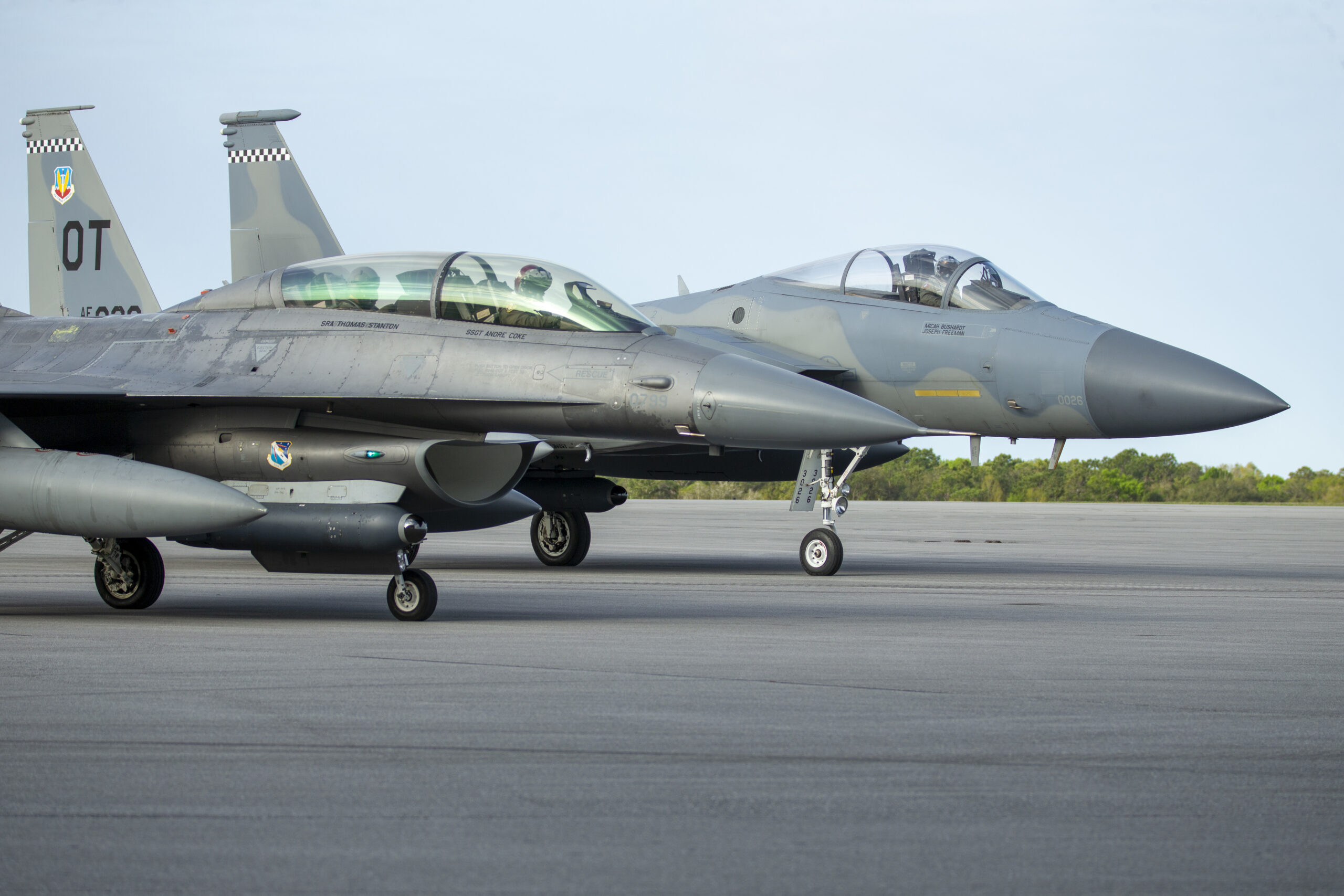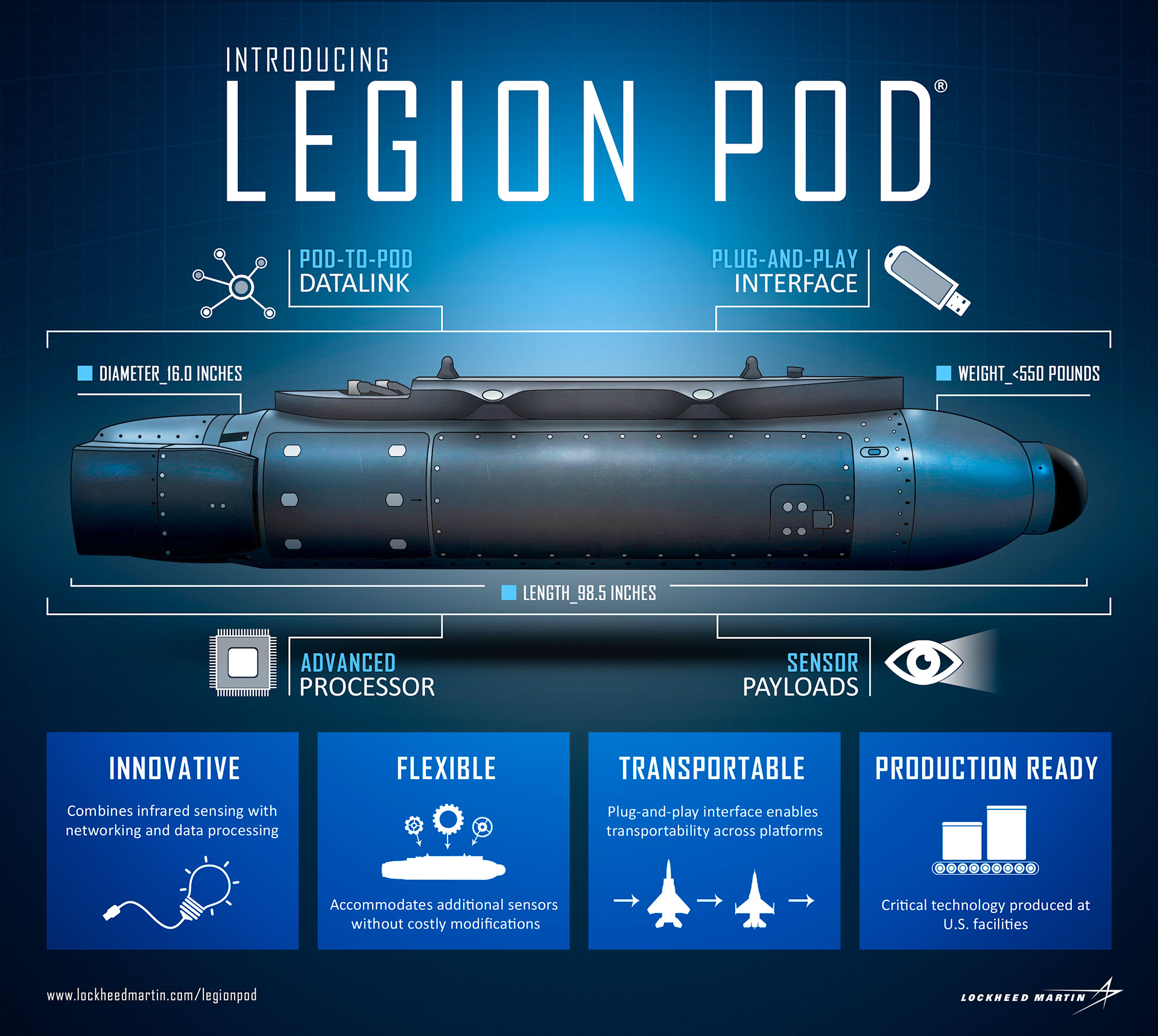USAF test team proves Legion pod on F-15s and F-16s
Eglin’s Integrated Test Team conducted the first-ever multi-platform operational test to effectively locate a target using shared data from the Legion infrared search and track sensor on April 7, 2022.
As reported in the press release issued by Eglin AFB, an F-15C Eagle and an F-16 Fighting Falcon, both equipped with Lockheed Martin’s Legion Pod, used the IRST21 infrared sensor to detect a target.
The aircraft were then able to share the sensor data through the Legion Pod’s advanced data link to passively triangulate the target’s position without the need for radar or other active detection sources.
“IRST technology provides a key enabler in the long-range kill chain as well as the ability to locate targets in a multispectral domain,” said Lt Col. Jeremy Castor, Operational Flight Program Combined Test Force F-16 sensors program manager. “Any large-force scenario includes multiple aircraft types, each with different viewpoints of the battlespace. The ability to share data provides information to the warfighter they would not be able to get otherwise.”

The Legion pod’s common interface allows integration into any aircraft with minimal or no impact on the aircraft’s main software. This versatility opens the door to integration, with minimal effort, on other fighter aircraft, such as the Air Force’s newest F-15EX.
“Our next step will be to explore the operationally relevant capabilities that IRST with an advanced datalink provides the warfighter,” said Castor. “The eventual goal is to provide this capability to anyone carrying an ADL Legion pod, regardless of platform.”
The first successful test of the IRST pod on the F-15 occurred at Northern Edge in April 2021. On July 2, 2021, the Legion Pod integrated to an Avenger drone was successfully tested. The first successful test on two F-16 fighters occurred in December 2021 at Eglin. The successful completion of this F-15/F-16 test on April 7 marks a milestone in the program’s continued progress.

/https://aviacionlinecdn.eleco.com.ar/media/2022/04/Legion-pod-IRST-test-scaled.jpeg)

Para comentar, debés estar registradoPor favor, iniciá sesión